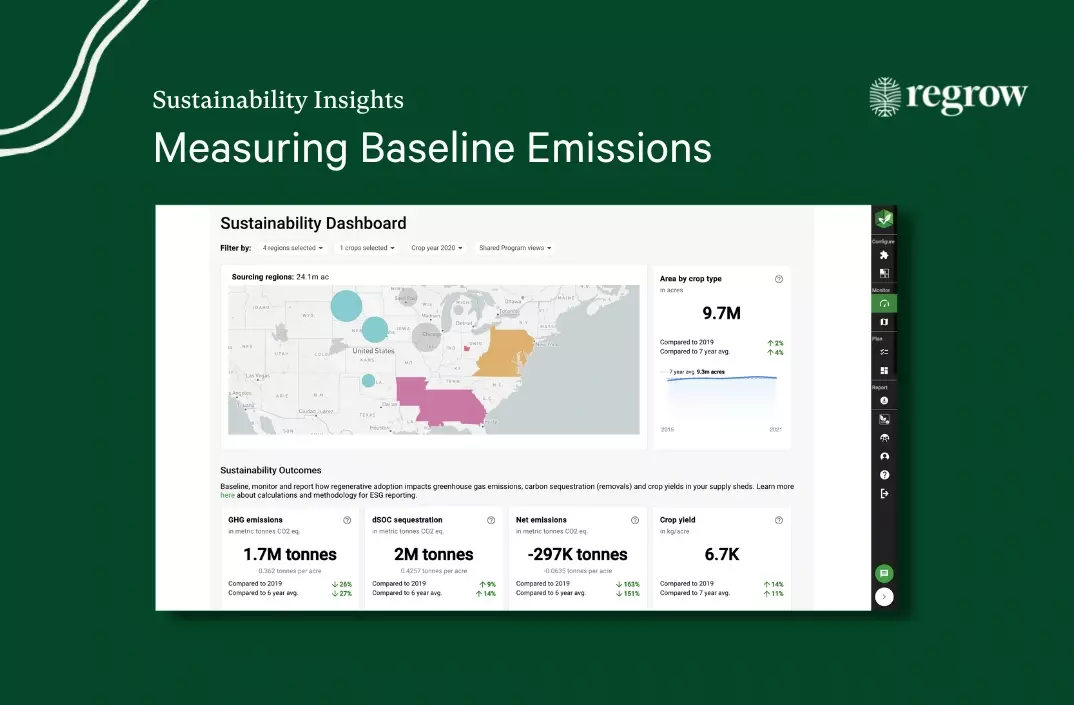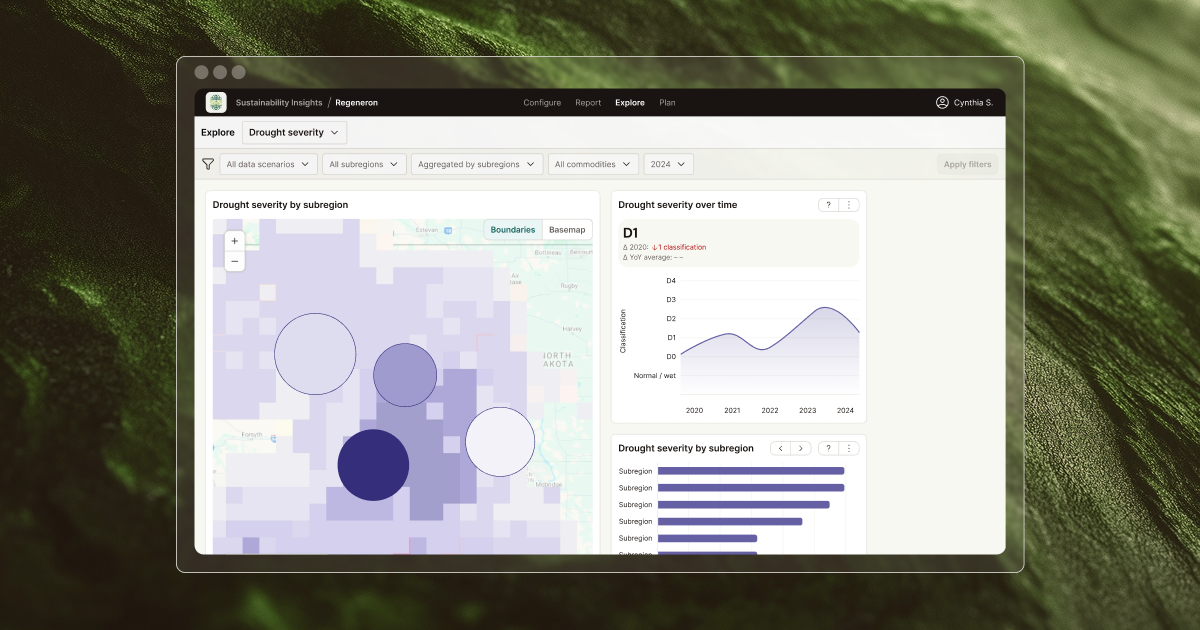What is a Baseline?
As food and agriculture companies continue to develop initiatives to reduce greenhouse gas emissions, it is essential to first define a point of reference from which future performance can be measured. In emissions accounting, this point of reference is called a baseline, and it is arguably the most important step a company takes as it plans strategies and initiatives to reduce emissions.
Put most simply, calculating a baseline requires answering two main questions:
- What are the current sources of emissions?
- What quantity of emissions occurs from each source?
A baseline is integral to informing strategic emissions reduction initiatives. For example, producing accurate sustainability reports, setting realistic emissions goals, and developing Science Based Targets all require a detailed baseline. Baselines are also critical to other initiatives, such as building materiality assessments to document and explore organizational risks, and creating project design documents to define the criteria for specific emissions reduction projects.
As companies continue to develop emissions reduction projects that require measurement, reporting and verification, they will be required to calculate accurate baselines in order to show that their projects meet the standards of third-party protocols, such as Verra’s VM0042 and the Climate Action Reserve’s Soil Enrichment Protocol.
Calculating a Baseline: Prioritizing Precise Data
For some companies, calculating a baseline can be a relatively straightforward exercise. But for companies with long, complex supply chains – especially supply chains that have extensive agricultural footprints – it can be challenging to measure Scope 3 emissions due to the lack of primary data from suppliers. In particular, companies that are baselining emissions tend to rely on static and default emission factors (EFs) that are applied broadly to a given region and crop.
For companies that have extensive Scope 3 emissions, relying on generalized EFs to calculate a baseline can be problematic.
This is because these EFs are often not aligned with the exact regions from which a company sources its products. This incongruity can make it difficult to convert a baseline into an actionable strategic plan to mitigate emissions.
For example, a company might be sourcing wheat from six separate locations within a given region, each of which have different growing practices, ecosystems and associated emissions. Using a default, regional EF does not capture this variability, making it more difficult for a company to design effective interventions or plan alternative sourcing scenarios in order to reduce these emissions.
Using Sustainability Insights to Calculate a Precise and Actionable Baseline
With this in mind, Regrow designed Sustainability Insights with the built-in capability to quickly calculate precise emission factors within specific supply sheds for each crop that they source. Specifically, Sustainability Insights calculates three separate emission factors for each selected crop:
- Field GHG Emission Factor: A representative value of GHG emissions divided by yield that quantifies emissions released into the atmosphere associated with a set of agricultural management activities.
- Field Net Emission Factor: A representative value of net emissions (GHG emitted and SOC sequestered) divided by yield that quantifies net emissions associated with a set of agricultural management activities.
- Fertilizer Emission Factor: A representative value of fertilizer application divided by yield that quantifies emissions released into the atmosphere to produce the amount of fertilizer applied to fields each year.
The data used to calculate emission factors within Sustainability Insights is generated using Regrow’s remote sensing-based technology, OpTIS. The data from OpTIS, which is input into Regrow’s model for estimating soil emissions, DNDC, captures the variability in emissions from different supply sheds and keeps the EFs for each crop and region up-to-date. This data granularity – knowing which regions are employing which agricultural practices, and their associated emission factors – is critical in empowering sustainability managers to identify specific emissions hotspots in their company’s carbon footprint, and planning reduction efforts accordingly.
To learn more about calculating baselines, or to see a demo of the Sustainability Insights platform, contact Regrow.



